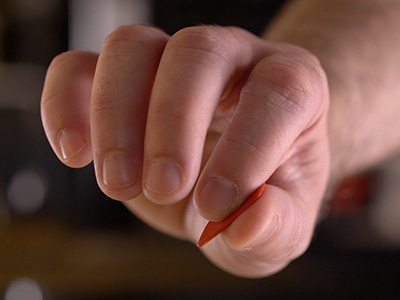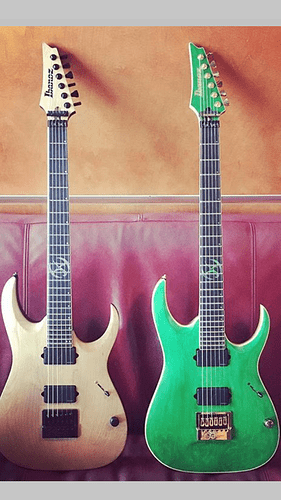If you’re sitting in a chair, and you place your hand on your lap with the fingers out, that’s pretty much exactly what my setup feels like - zero tension, and with the soft parts of the bridge-side of the picking hand contacting the strings. For a good real-world example of what this looks like, take a look at the following Talking the Code we did on swiping:
Picking up the guitar and orienting as you see in this clip should be comfortable first and foremost: forearm on the body, hand resting on the bridge, fingers out and loose, no tension anywhere in the structure. The arm is supporting its weight at the forearm / body contact point, so everything below that is pretty loose.
Note also that the forearm is not pressed up against the guitar body and hugging it the way a lot of upward pickslanters do, or the way Andy Wood tends to, for example. Instead, there’s a small amount of wrist flexion, so the forearm / wrist arrangement is curved, and forms a shallow bridge over the guitar’s body. When I’m playing with dwps, you could stick an iphone between my forearm and the guitar in the gap that’s there.
Can you do this, is it uncomfortable, and if so what about is uncomfortable?
Second, the pick grip I’m using is what I’ve termed ‘angle pad’ in our pick grip poll:

There’s room for variation here in terms of different grips, and they can all be made to work. But in the interest of replicating my setup entirely as an experiment, you can give this a shot and see how it affects your geometry. One of the most insightful things Teemu talks about in his interview is how pick grip affects the geometry by causing the pick to slant, allowing you to reach the strings more easily when you’ve got this lightly flexed forearm arc happening.
Try not to worry too much about moving the setup, or doing “forearm rotation” in any kind of explicit way. Just see if you can get these parts arranged like this in a way that feels comfortable.



